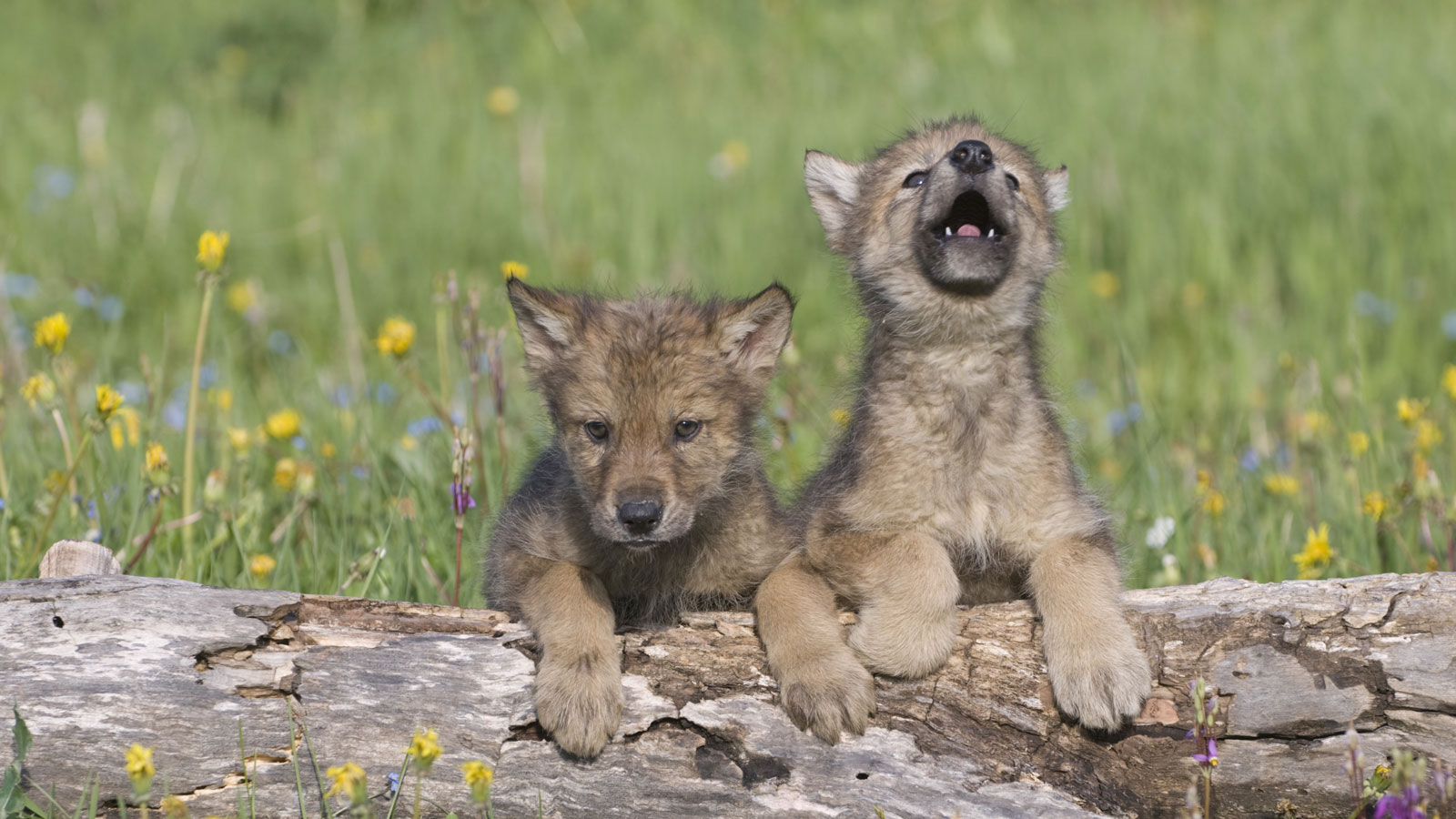
Tell your U.S. senators: Don’t erase protections for wolves
This bill could unleash nationwide wolf hunting and trapping. Tell your U.S. senators to defend endangered gray wolves.
December marked the 50th anniversary of the Endangered Species Act, but the House isn't celebrating.
The U.S. House and Senate do need to pass spending bills to keep government open. But what they don’t need to do — and shouldn’t do — is add policy “riders” to the spending bills that block or weaken Endangered Species Act protections for wildlife that are closing in on extinction or not yet recovered.
But the House did precisely this, targeting Right whales, Rice’s whales, sage-grouse, Northern long-eared bats, gray wolves, Yellowstone grizzlies and more.
The Endangered Species Act turned 50 last month and has a 99% success rate at preventing the extinction of a species. It seems the U.S. House isn’t celebrating.
Urge your Senators to reject the anti-wildlife provisions. You can call the Senate switchboard at (202) 224-3121. An operator will connect you with the Senate office you request.
For those wanting to dig deeper, here are some of the anti-wildlife “riders” on the House Interior Appropriations Bill — H.R. 4821.
Delists Gray Wolf: Sec. 452 would direct the Secretary of the Interior to reinstate the flawed Trump administration rule delisting the gray wolf in 44 states, which was hastily issued by the FWS at the end of the last administration. Gray wolf populations in the United States were decimated by decades of predator control programs, as well as loss of habitat and prey. Since receiving protection under the ESA in 1974, the gray wolf has begun a comeback, but remains far from recovered.
Delists Greater Yellowstone Ecosystem Grizzly Bear: Sec. 491 would direct the Secretary of the Interior to reinstate and bar judicial review of the June 2017 final rule delisting the Greater Yellowstone population of grizzly bears, which was held unlawful in Federal court. The grizzly bear’s decline from habitat loss and suppression through hunting and heavy-handed predator control programs was one of the factors prompting enactment of the ESA, and it was listed as threatened soon after enactment. Grizzly bear populations in the Greater Yellowstone and Northen Continental Divide Ecosystems are stable and growing, but concern remains about the isolation of those populations, the threat of increased human-induced mortality through hunting or predator control if they were delisted, and the effects of delisting particular populations on grizzly bears in the rest of the lower-48 states.
Blocks Increased Protections for North Atlantic Right Whale: Sec. 512 would undermine the ESA and the Marine Mammal Protection Act – and subvert the agency rulemaking process – by prohibiting any funds appropriated in the Interior bill from being used to finalize or implement the August 2022 proposed rule to expand the 2008 North Atlantic right whale vessel speed rule to further reduce the likelihood of mortalities and injuries to the whales from vessel collisions. Vessel strikes are the second leading cause of mortality and injury to the endangered North Atlantic right whale, which continues to be at significant risk of functional extinction. The impact of this rider is likely mitigated by the fact that the agencies primarily responsible for the rule are not funded under the Interior bill.
Weakens Protections for Rice’s Whale: Sec. 517 would weaken protections for the critically endangered Rice’s whale in the Gulf of Mexico by prohibiting funding for implementation of a July 2023 settlement agreement that would reduce risks to the species from oil and gas development and vessel strikes, which are minimum protections needed to save the species from extinction in the near term. The risk of being struck and killed by a vessel is a primary threat to the survival of the 51 remaining Rice’s whales and oil and gas vessel transits represent 40 percent of the vessel strike risk in the Gulf.
Blocks Increased Protections for Northern Long-Eared Bat: Sec. 457 would block funding to implement the November 2022 final rule “uplisting” the northern long-eared bat from threatened to endangered. While the fungal disease white-nose syndrome is the most significant driver of northern long-eared bat loss, the species also faces threats from habitat loss and more.
Blocks Protections for the Lesser Prairie Chicken: Sec. 448 would block funding for the November 2022 rule protecting the lesser prairie chicken under the ESA. The lesser prairie chicken has lost between 83-90% of its habitat to various forms of development, and its population has declined by as much as 99% in some ecoregions and faces imminent extinction in the southern portion of its range.
Blocks Protections for Sage-Grouse: Sec. 116 would continue and expand the rider which has been included in Interior appropriations bills since 2014, prohibiting the U.S. Fish and Wildlife Service (FWS) from listing the greater sage-grouse and the Columbia Basin distinct population segment of the species for protection under the Endangered Species Act (ESA). Sec. 116 also would expand the perennial rider to include the geographically isolated, genetically distinct, and extremely vulnerable bi-state population of greater sage-grouse found only on the California-Nevada border.
Note also that there is one anti-wildlife rider in the Senate Interior/EPA Appropriations Bill – S. 2605.
Sage-Grouse: Similar to Sec.116 of H.R. 4821, Sec. 119 of S. 2605 continues the perennial rider that has been included in Interior appropriations bills since 2014, prohibiting U.S. Fish and Wildlife Service from considering greater sage-grouse and the Columbia Basin distinct population segment of the species for protection under the ESA. However, the Senate rider differs from the House version in that it does not expand the language to include the bi-state population of greater sage-grouse found only on the California-Nevada border.
Here’s the full text of the letter the environmental community sent to Congress.
This bill could unleash nationwide wolf hunting and trapping. Tell your U.S. senators to defend endangered gray wolves.
Take action
